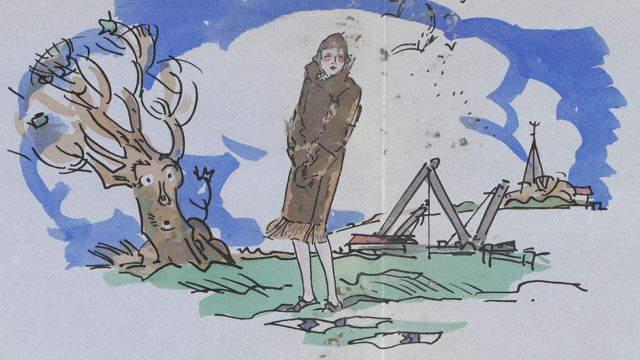Is this a dagger, which I see before me,
The handle toward my hand?
(Macbeth, II.i.33-34)
David Garrick (1717-79) delivered Macbeth’s famous soliloquy 37 times on the London stage between 1744 and 1768. Thomas Wilkes, in A General View of the Stage (1759), attempted to describe the manner of Garrick’s performance, specifically his unrivaled ability to capture and communicate Macbeth’s psychological turmoil:
There is not any character in Tragedy so seldom hit off by the Actor as Macbeth, perhaps there are few more difficult; and in the hands of Garrick it acquires an inconceivable ease. It is curious to observe in him the progress of guilt from the intention to the act. How his ambition kindles at the distant prospect of the crown, when the witches prophecy! and with what reluctance he yields, upon the diabolical persuasions of his wife, to the perpetration of the murder! How finely does he shew his resolution staggered, upon the supposed view of the air-drawn dagger, until he is rouzed to action by the signal, viz. the ringing of the closet bell.
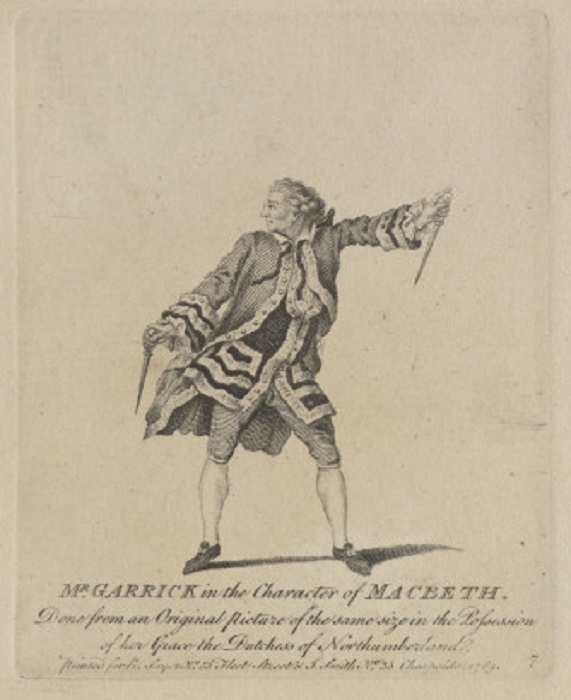
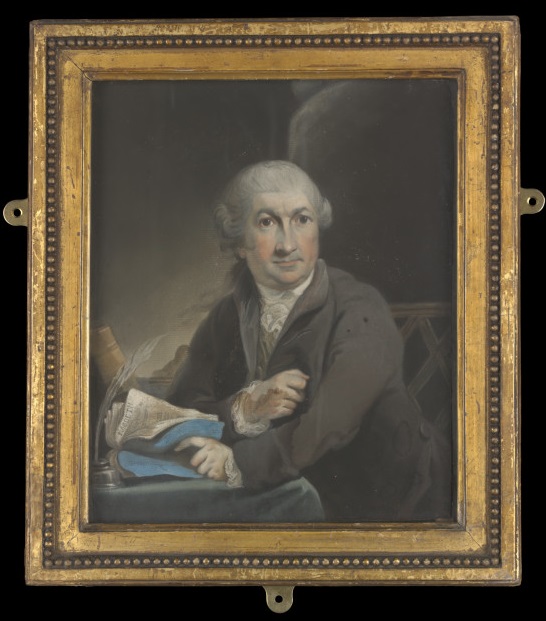
During a visit to Italy in 1764, Garrick was persuaded by the Duke of Parma to give a private performance of Macbeth’s soliloquy before the elite company of the Duke of York, Lord Spencer and Guillaume-Leon Dutillot, Marquis de Felino. Writing to friend back in England, Garrick observed that the Duke ‘speaks English very well and understands it better—He had read Shakespear, and was very desirous to hear our manner of speaking’. Ever susceptible to flattery, particularly from an aristocratic source, Garrick duly obliged. Thomas Davies, an actor turned bookseller, and Garrick’s first biographer, imagined the scene in his Memoirs of the Life of David Garrick, Esq. (1780):
Mr. Garrick immediately recited a soliloquy of Macbeth, which is spoken during the instant of time when a dagger is presented to the disturbed imagination of a man ready to perpetrate a horrid murder. His ardent look, expressive tones, and impassioned action, convinced the nobleman of his great theatric excellence.
Davies’s description of Garrick’s histrionics presumably derives from his first-hand experience of watching Garrick perform the role in a London theatre.
Suitably impressed, the Duke of Parma sent Garrick the following day ‘a very handsome gold box, with some of the finest enamelled painting upon all the sides of it I ever saw’.
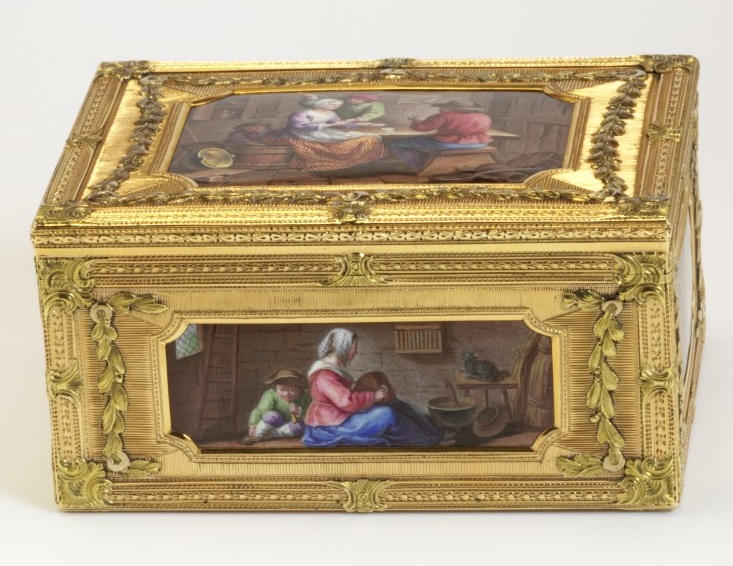
This was not the only snuffbox that Garrick acquired on his travels. He was also presented with one by the Duke of Wurtemberg. According to an anecdote supplied to Arthur Murphy by Tom King, his particular snuffbox provoked a waspish comment from the actor Charles Holland:
He and Holland were in conversation with Garrick in his library. Their subject turned on some occurrences that happened on the continent. In the midst of their discourse, Garrick opened the drawer of a cabinet, and took out a rich snuff-box, given to him as a present by the Duke of Wurtemberg, for the pleasure he had received from the extraordinary specimens of English tragedy. Holland looked at this handsome trinket, and in that blunt manner, for which he was remarkable, said to Garrick, ‘And so you went about the continent, mouthing for snuff-boxes’. Garrick knew his pupil and took no offence.
The snuffbox given to Garrick by the Duke of Parma was a cherished keepsake. In her Will, Garrick’s wife, Eva Maria (1724-1822), bequeathed it to her great nephew, Nathaniel Egerton Garrick (d. 1843). It remained in this particular branch of the Garrick family until 1885 when a solicitor, William Fras. Low, acting on behalf of the executors of the Will of Wilhelmine Caroline Garrick, wrote to the V&A to inform the curators of this surprise bequest. Low’s letter offered a description of the snuffbox as well as an account of its provenance:
It is described in the Will as a gorgeous Snuff Box with six compartments of Paintings by Teniers enamelled upon Gold and as having been bequeathed by the Relict of David Garrick to the late Nathan Egerton Garrick who bequeathed the same to his eldest son the Testators later husband Nathan David Garrick and is bequeathed in compliance with his wishes to that effect to the South Kensington Museum.
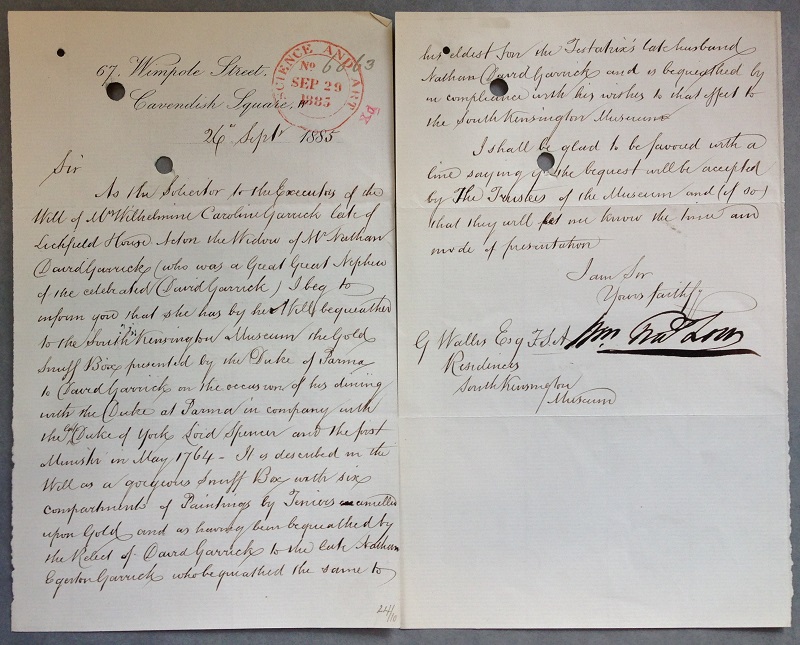
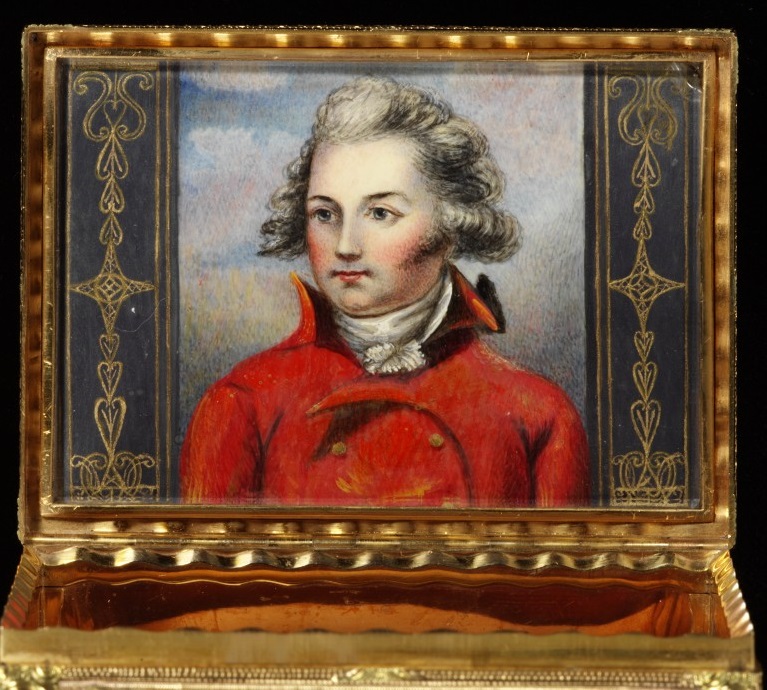
This snuffbox was, I think, the first object belonging to Garrick that the V&A acquired for its collection. It has since been joined by several other evocative relics including the Garrick bedroom furniture suite, bookcase and chairs, tea service, and the Robert Adam designed ceiling for the drawing room of Garrick’s London townhouse at No. 5 Adelphi Terrace.
Afterpiece
Several other snuffboxes that once belonged to Garrick are knocking around. There is one at Smallhythe Place, Kent (National Trust), which was ‘carved from a piece of the mulberry tree planted by the hand of Shakespeare at Stratford on Avon during the Jubilee there in 1769’ according to a plaque on the inside of the lid. Another mulberry snuffbox is at the Garrick Club, along with an amber snuffbox which Mrs Garrick gave to a Bishopsgate solicitor named Clarke, whose son subsequently presented it to the Club. According to their website, members of The Honourable Company of the Round Table pass round at Society dinners Garrick’s snuffbox, which has ‘an original William Hogarth painting of him playing five different characters on the lid’. There is another in the gallery at Netherstowe House, Lichfield, which was once the property of Arthur Hinckley. Back to the V&A: in the Theatre & Performance Archive a letter from Albert Marsham Palmer to Sir Henry Irving, 24 March 1888, refers to ‘the little Garrick snuffbox’ which Garrick presented to James Wickins on repayment of a debit, that Palmer is sending Irving as a gift. It seems that Garrick not only collected snuffboxes but gave them away too.


